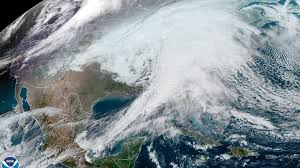A powerful storm has wreaked havoc across the Northeast, leading to widespread power outages and significant disruptions. The storm, characterized by high winds, heavy rain, and in some areas, snow, has affected millions of residents and left many communities grappling with the aftermath.
Introduction to the Storm’s Impact
This major storm, which swept through the Northeast over the past few days, has left a trail of destruction in its wake. The combination of severe weather elements has resulted in extensive damage to infrastructure, particularly the power grid, leaving countless homes and businesses without electricity.
Extent of the Power Outages
The power outages are widespread, affecting both urban and rural areas. Utility companies are reporting that millions of customers are experiencing service disruptions, with some areas expected to be without power for several days.
Urban Areas Hit Hard
Cities like New York, Boston, and Philadelphia have seen significant outages, impacting not only residential areas but also critical services such as hospitals and public transportation systems.
Rural Communities Struggle
Rural areas have also been severely affected, with downed power lines and blocked roads making it difficult for repair crews to restore services quickly.
Causes of the Power Outages
The storm’s intensity and the variety of weather conditions have combined to create a perfect storm for power outages.
High Winds and Fallen Trees
One of the primary causes of the outages is high winds, which have brought down trees and power lines. Wind speeds in some areas exceeded 70 mph, causing widespread damage.
Heavy Rain and Flooding
In addition to high winds, heavy rain has led to flooding in several regions. Flooded substations and transformers have compounded the challenges faced by utility companies.
Snow and Ice Accumulation
In the northern parts of the Northeast, the storm brought significant snowfall and ice accumulation, further complicating efforts to restore power.
Response and Recovery Efforts
Utility companies, emergency services, and local governments are working tirelessly to restore power and provide assistance to affected communities.
Utility Companies’ Efforts
Utility companies have mobilized thousands of workers to address the outages. Crews are working around the clock to repair downed lines and damaged infrastructure.
Challenges Faced by Crews
Despite their efforts, crews are facing numerous challenges, including hazardous weather conditions, blocked roads, and the sheer scale of the damage.
Emergency Services and Local Governments
Emergency services are assisting with evacuations in flooded areas and providing support to those in need. Local governments have opened shelters and are coordinating relief efforts.
Community Support and Resilience
Communities are coming together to support one another, with neighbors helping neighbors and local organizations providing resources and assistance.
Impact on Daily Life
The power outages have had a profound impact on daily life in the affected areas.
Schools and Businesses Closed
Many schools and businesses have been forced to close, adding to the disruption caused by the storm.
Transportation Disruptions
Public transportation systems have been heavily impacted, with delays and cancellations widespread. Road closures due to fallen trees and flooding are further complicating travel.
Healthcare Services Strained
Hospitals and healthcare facilities are relying on backup generators to maintain critical services, but the strain is evident as they manage increased demand due to storm-related injuries.
Looking Ahead: Preparing for Future Storms
As the Northeast begins to recover from this storm, there is a growing focus on how to better prepare for future severe weather events.
Strengthening Infrastructure
Investing in stronger, more resilient infrastructure is a key priority. This includes upgrading the power grid and improving stormwater management systems to mitigate the impact of future storms.
Community Preparedness
Educating communities about emergency preparedness and response can help ensure that residents are better equipped to handle similar situations in the future.
Policy and Planning
Local and state governments are likely to review and update their policies and emergency plans to improve response times and resource allocation in future emergencies.
The major storm that has caused widespread power outages across the Northeast serves as a stark reminder of the power of nature and the importance of preparedness. As utility companies and emergency services work to restore normalcy, the resilience and support of the community play a crucial role in recovery efforts. Moving forward, it is essential to invest in stronger infrastructure and comprehensive emergency planning to better withstand future storms.




